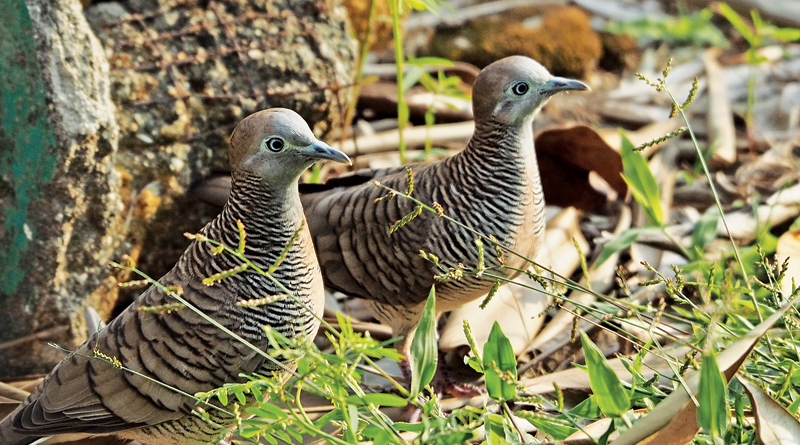CUCKOOS INSIDE AND OUT – Life In The Outdoors

My cuckoos are calling; the cuckoos in my clocks, three of them, coo-coo coo-coo coo-coo. They’re telling me it’s now noon. They don’t distinguish between day and night and give me the same signal at midnight. I have a fourth cuckoo in a clock but it has lost its voice and needs to go to a repair shop.
The cuckoos in my clocks, and all cuckoo clocks, have the voice of the cuckoo of Britain, Europe and Asia. The wild birds are about the length of kestrels and have long rounded tails and pointed wings. They’re bluish-gray on the head, upper back, throat and upper breast, dark on the lower back, rump, tail and from the belly back. Some females are rusty-brown and finely banded with black on the top of the head, back, tail, breast and belly. And, of course, they have the familiar call of cuckoo clocks.
The Eurasian cuckoo is a wide ranging bird, found in woodlands and in open fields. It’s nest-parasitic and brood-parasitic. That is, it lays its eggs in the nests of other birds and other birds hatch the eggs and raise the young, like the American cowbird.
There are cuckoos in North America also, three species, black-billed, yellow-billed and mangrove. All are about the same size as the European cuckoo but brown on the top of the head and back. The mangrove cuckoo is white on the throat and upper breast, buffy farther back. None has the call of the cuckoo in a clock.
The mangrove cuckoo is a bird of the Caribbean Islands and Central and South American Islands. It is found in North America only in southern and southwestern Florida. I’ve never seen a mangrove cuckoo, though I’ve been in Florida in its range and looked for it.
Black-billed and yellow-billed cuckoos have, or had, very broad nesting ranges in North America. The black-billed nested in southern Canada, south to the central states of the U.S. The yellow-billed nested from the northern states of the U.S. south to the Gulf of Mexico. I saw both in Iowa where I grew up and in Indiana where I have lived for many years.
Black and yellow-billed cuckoos are birds of woodlands, shy birds, difficult to spot among the leaves. I heard them much more often that I saw them. When I did see one I usually heard it first. The call of the black-billed is described as a fast rhythmic cucucucu. The call of a yellow-billed is described as a rapid throaty kakakaka. Neither sounds anything like the cuckoos in my clocks.
American cuckoos are different in color, in habits and in voice than the Eurasian cuckoo. First, they are not nest or brood parasitic. They build nests, though their nests are flimsy platforms of sticks and grass. They lay their eggs in their nests and they incubate and hatch their eggs and care for the nestlings and fledglings until the young birds learn to care for themselves.
I liked cuckoos in the wild, American cuckoos, not just the cuckoos in my clocks. They were so difficult to spot that seeing one, even just hearing one, was a special occasion. But I haven’t seen, or heard, a black-billed or a yellow-billed cuckoo in several years. I don’t remember the last time I saw or heard a black-billed or yellow-billed cuckoo.
Are black-billed and yellow-billed cuckoos rare? Should they be listed as endangered species? Are they extinct, like the passenger pigeon, Labrador duck and Carolina parakeet? I’m still looking and listening, whenever I go wandering in the nearby state park or other woodland. I’m looking, listening and hoping to see or hear a black-billed or yellow-billed cuckoo. And I intend to take my cuckoo clock without a voice to the repair shop soon.
- Birds As Weather Forecasters – Life In The Outdoors - December 17, 2021
- Rare Bird Spotted In Indiana – Life In The Outdoors - October 8, 2021
- MY EXPERIENCE WITH DEER – Life In The Outdoors - July 30, 2021


